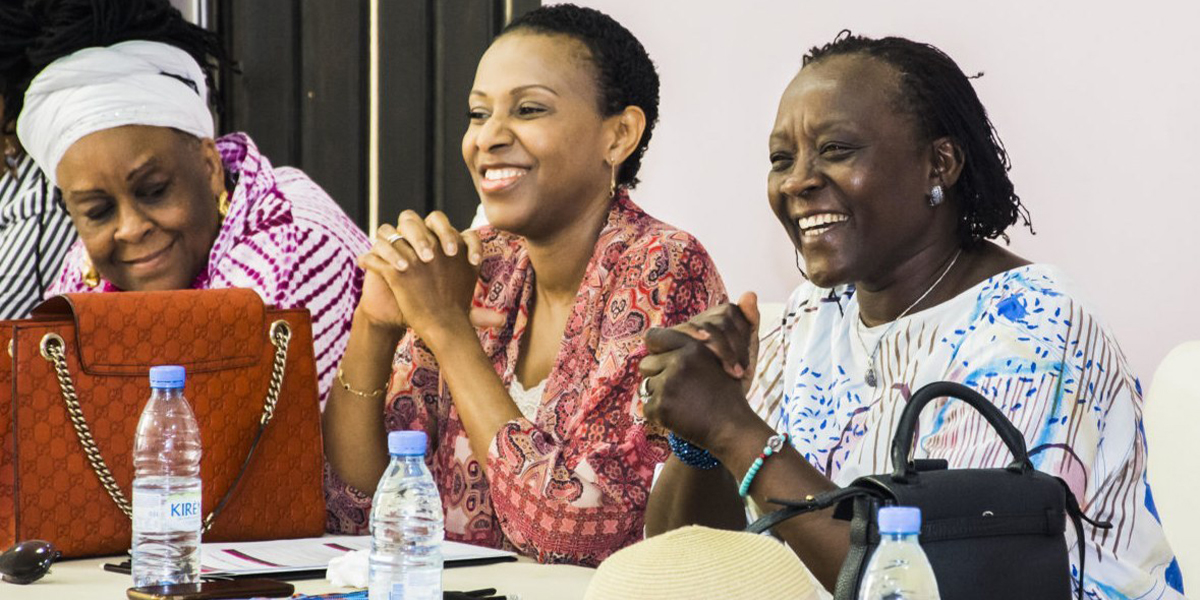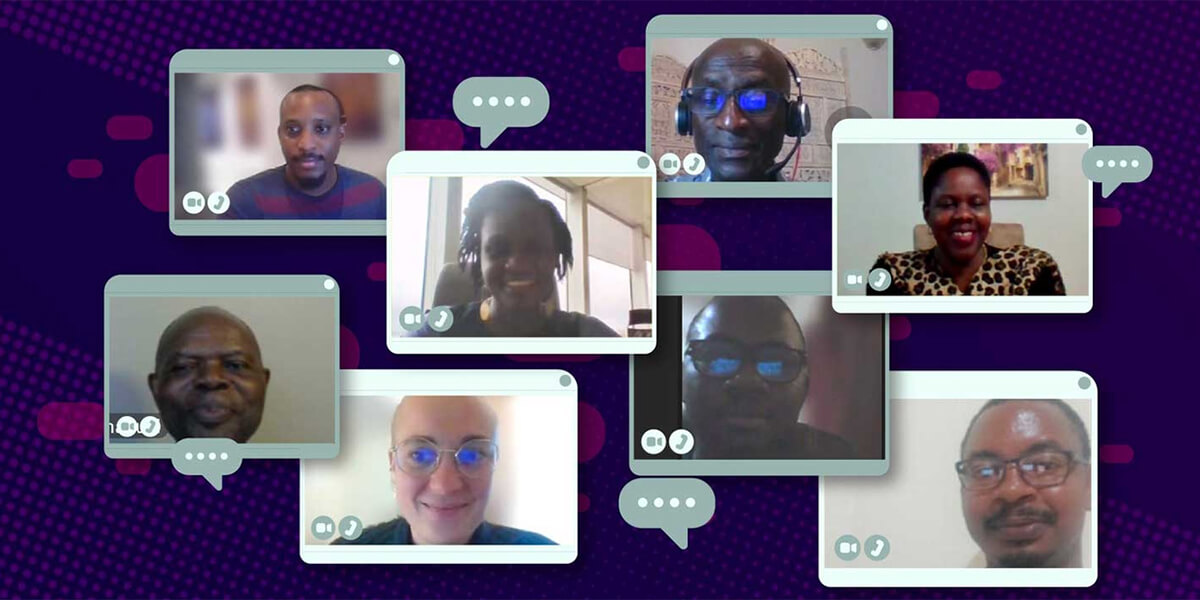
Investing in Women Entrepreneurship Capacity Building – What Is Working and Not Working
In the face of rising unemployment in Africa, governments, development sectors, and businesses have a lot of effort to boost entrepreneurship through capacity building. At the heart of this are women entrepreneurs. There is a good rationale for investing in women to become wealth-generating entrepreneurs since women invest more in the economic and social welfare of the families and communities, and the return on investment can be great, including for the realisation of the Africa Agenda 2063 and global Sustainable Development Goals.
A few weeks ago, I was interviewed by an associate of a global development organisation on the topic: ‘what is working and not working’, about women’s entrepreneurship development capacity building. As the Project Lead for the Graça Machel Trust Women Creating Wealth (WCW) initiative, this topic is particularly close to my heart. WCW is ‘a pan African movement that inspires, equips and empowers female entrepreneurs to transform their businesses from income to wealth-generating enterprises’. The programme was launched in 2016 and now has 430 alumni from Malawi, Zambia, Tanzania and South Africa.
Having also run my own business for 15 years and been in the entrepreneurship development sector for 20 years working on various initiatives, including the Goldman Sachs 10 000 Women, I have a first-hand understanding of some of the challenges women in business face. Key among them is that women do not think big enough when they start businesses more often than not.
As part of our research into women entrepreneurship development, including the Graça Machel Trust Women Creating Wealth Publication, we looked at the case studies of 60 women entrepreneurs across the continent, and we confirmed three significant constraints faced by African women entrepreneurs, including:
A lack of confidence and a lack of financial and business management skills;
Limited ability to tap into support services, including business networks, coaching, and mentoring;
Poor information about and inadequate preparation to access markets and finance.
“We recognise that structural barriers such as access to finance are generally beyond individuals’ control. But, well-designed capacity-building interventions, including coaching, mentoring; and technical, network and peer support, can substantially build women entrepreneurs’ resilience and confidence to go out and access what they need to succeed “- Korkor Cudjoe
Several reasons why ‘What’s Working and Not Working’ came by? Firstly, there is a lot to offer. It is expected that we should have cracked the challenge of growing businesses after all the efforts being driven in the sector. Secondly, we have observed that entrepreneurs move from one support initiative to the other, so we need to examine what can be done to serve them to better use the knowledge they acquired and to grow steadily instead of’ programme hopping’.
Thirdly, the question arises of a reasonable percentage rate of success for any cohort that can be nurtured into sustained growth? Finally, we need to determine what lasting change looks like when entrepreneurs show remarkable post-intervention results? Small Business Administration (SMA) research statistics show that 21.5% of start-ups fail in the first year, 30% in the second year, 50% in the fifth year, and 70% in their 10th year. It is important to note that the lessons learnt from a failed business can be converted into classes for new businesses and that all is not lost.
Addressing Capacity Gaps
We know capacity-building matters and can make a big difference in moving micro and small businesses forward. There is evidence of remarkable changes in the before and after impact analysis and testimonies. We also confirmed changes in behaviour and attitudes of witnesses around the entrepreneur, including their employees, partners and loved ones.
Evidently, skills gaps are fundamental, and a demand-driven and well-designed capacity building programme can significantly strengthen competencies. For young entrepreneurs, it is worth taking the initiative to thoroughly diagnose their stage of business and related knowledge gaps to help them plan their capacity development needs accordingly.
There is also the challenge of discipline in applying the knowledge gained and recognising that entrepreneurs will be tested on: resilience in the face of managing the big, open, and competitive markets; managing and balancing cash flow; leading and managing customers and employees; the challenges of raising finance; and, in particular for female entrepreneurs, all the while taking care of domestic demands. Due to this, we need peer support, a space to let off steam during difficulties, and a regular dose of inspiration to stay afloat. Thriving entrepreneurs, who work as collectives or communities, form strong bonds over shared information, resources, linkages, and mentorship.
Sustaining Growth for those Significantly Impacted
What happens a year or so after a significant recorded impact for high achieving entrepreneurs from a capacity building programme? Sustaining growth depends on several factors: identification process and assessment of needs; stage of business; experience and commitment of entrepreneur to apply learnings. The design, quality of delivery, and duration of support matter too.
Well-structured programmes can impact at least 80% of the cohorts, and notable change can be seen in the top 20% – the high achievers. In this 20% lies the golden opportunity to intensify support in the immediate term to accelerate impact through rewarding the efforts and connecting them to additional resources such as coaching, technical advisory, and support, including hand holding to facilitate access to finance. The current industry record of successful funding applications is only 5%.
Thus, there appears to be more money available than entrepreneurs who can match what investors are looking for. This is where the partnership with investors and financial institutions is critical to quickly pick up the identified 20% of growth-oriented entrepreneurs and work closely with them to address their immediate gaps and challenges and better prepare them for funding. We must recognise this type of enabling partnership and take lessons to scale the successes of the partnerships into successful financing.
It is also essential to explore some unintended consequences of our development initiatives. For example, are we creating a dependency in the market with the ‘free’ or heavily subsidised training initiatives? Given the precarious nature and uncertainty of markets, entrepreneurs can also look to get ‘lucky’ and sometimes apply for intervention hoping to find that silver bullet. However, depending on the organisation, the expectation can significantly escalate, including the hope that many doors will be opened automatically, especially to funding. While this is all possible, the entrepreneur’s effort to run the course is critical, as luck comes with preparation and resilience.
We also need to factor in that life happens, especially in the life of women entrepreneurs, who often carry additional responsibilities such as parenting and domestic burdens. Domestic events can set entrepreneurs back from time to time, and the recovery process can be complex, resulting in self-doubt and imposter syndrome. As such, we need to move from short, eventful programmes to more sustained interventions that accommodate the trials accompanying these responsibilities.
This is where building a value-generating and supportive business community is critical and can allow women to better navigate the challenging entrepreneurship journey. The business community becomes a home of like-minded people who share common challenges and aspirations and creates a nurturing platform where entrepreneurs commune to encourage and inspire good practice to recover quickly from setbacks. What seems clear is that once the entrepreneur gets a handle on succeeding, there is no holding them back, especially if they identify similarly motivated peers and role models from whom they continue to gain inspiration.
So that when they come across hurdles, they don’t lose faith for too long and instead look for and find what they need to move forward. Therefore, the business community can become an empowering platform for ongoing live masterclasses, as repetition is key in learning circles where entrepreneurs come to look for inspiration and, better still, look for accountability partners to drive action.
So, when it comes to what is working and not working, there is no easy answer. Instead, it is better to look at the holistic nature of the programme to help identify growth-oriented businesses. Additionally, a value-generation business community will help incremental growth for the majority.
Furthermore, a well-connected ecosystem, where we see entrepreneurship capacity building as a relay with investors and financial institutions, is necessary, especially for women entrepreneurs to level the playing field through gender lens investing. This is a key partner in building relationships with investors who have the knack for making money and can be great mentors to emerging entrepreneurs.
“While entrepreneurs can be dreamers and hope that there will be a miraculous breakthrough around the corner, many successful entrepreneurs will agree that there is great pay-off in taking time to build a big vision. Set goals, put measurable plans in place, review progress regularly, network, and connect with those who support you. Like in all challenging endeavours, we need to find daily inspiration to energise, stay optimistic, and build resilience to sustain growth and impact.”
Tags: Women Winpreeurs




